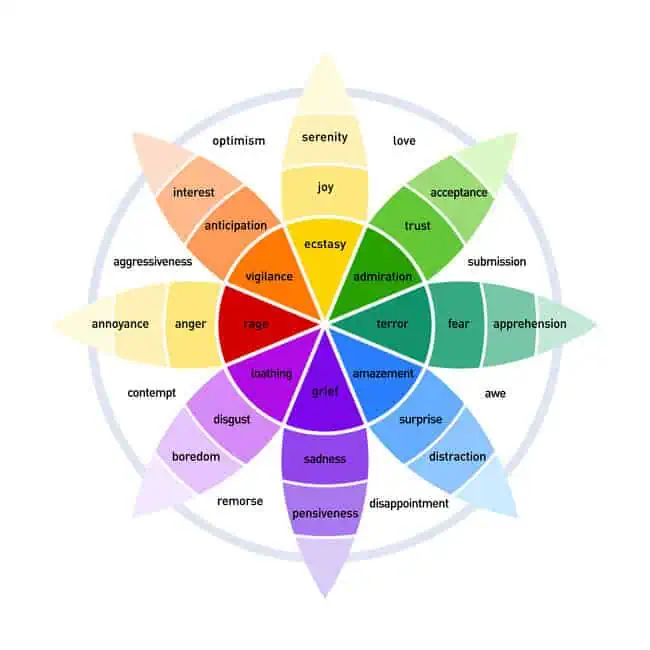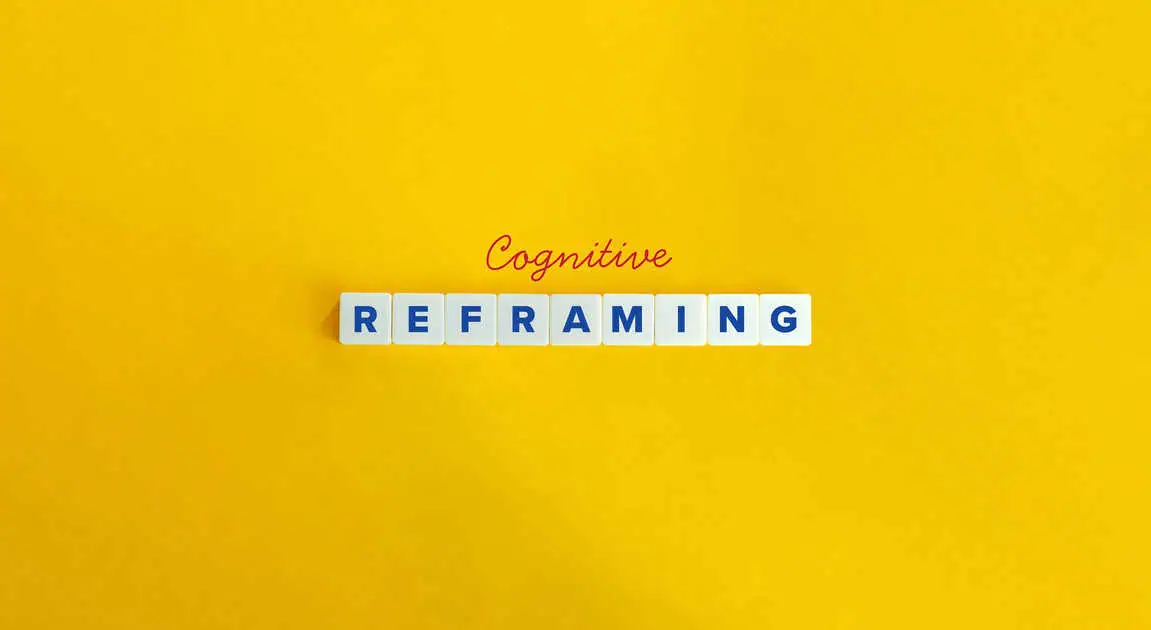Table of Contents
Cognitive reframing is a powerful technique for challenging and changing negative or irrational thought patterns. It allows individuals to view situations from a more positive and realistic perspective, reducing emotional distress and promoting mental well-being. This technique can be beneficial for those dealing with anxiety, depression, and other mental health challenges. A cognitive reframing worksheet can guide individuals through the process, making it easier to apply reframing strategies effectively.
This blog post will explore seven types of cognitive reframing worksheets and how they work for different thought patterns. Whether you’re looking for a free cognitive reframing worksheet, need exercises for anxiety, or are searching for a printable cognitive reframing worksheet, we’ll break down the options for you. Plus, we’ll explain which worksheets are most effective for specific conditions like anxiety and depression.
What is Cognitive Reframing?
Cognitive reframing is a therapeutic technique for changing the way individuals think about a situation. It involves identifying negative or distorted thoughts, challenging them, and replacing them with healthier, more balanced alternatives. This technique is commonly used in cognitive-behavioral therapy (CBT) to help individuals manage a wide range of mental health issues, from stress to depression to anxiety.
By practicing cognitive reframing exercises, individuals can shift their thought patterns and cultivate a more positive and realistic view of the world around them. The goal is not to suppress emotions but to help individuals respond to situations in a way that promotes emotional well-being.
7 Types of Cognitive Reframing Worksheets
1. Basic Cognitive Reframing Worksheet
A basic cognitive reframing worksheet is a great starting point for anyone new to the technique. This worksheet helps individuals identify negative thoughts, recognize cognitive distortions (like all-or-nothing thinking), and replace them with more rational and constructive thoughts.
How it Works:
The worksheet typically includes sections for:
- Writing down the negative thoughts.
- Identifying the cognitive distortion involved (e.g., catastrophizing or overgeneralizing).
- Challenging the thought with evidence and logic.
- Reframing the thought into a more balanced, positive statement.
2. Cognitive Reframing Worksheet for Anxiety
When dealing with anxiety, negative thoughts can become overwhelming and lead to increased stress and worry. A cognitive reframing worksheet for anxiety helps individuals address these specific thoughts by guiding them through the process of identifying and challenging anxiety-driven thoughts.
How it Works:
This worksheet typically involves:
- Identifying anxious thoughts (e.g., “I can’t handle this situation”).
- Examining the evidence for and against the thought.
- Reframing the thought to be more balanced (e.g., “I can manage this by taking one step at a time”).
- Recognizing potential outcomes or situations where similar thoughts were proven untrue.
3. Cognitive Reframing Worksheet for Depression
Depression often causes people to have persistent negative thoughts about themselves, their future, and the world. A cognitive reframing worksheet for depression targets these negative thought patterns, helping individuals challenge their self-critical and hopeless thinking.
How it Works:
This worksheet helps users:
- Identify negative or depressive thoughts (e.g., “I’ll never get better” or “Nothing will improve”).
- Reflect on past experiences or evidence that contradict these beliefs.
- Create alternative, healthier thoughts (e.g., “I have made progress in the past” or “I can take small steps to improve my situation”).
Using a cognitive reframing worksheet for depression can be especially helpful for individuals looking to break the cycle of self-criticism and hopelessness.
4. Cognitive Reframing Worksheet for Self-Esteem
Low self-esteem can lead to negative self-talk and feelings of inadequacy. A cognitive reframing worksheet for self-esteem helps individuals challenge their negative beliefs about themselves and build a more positive self-image.
How it Works:
This worksheet usually includes:
- Identifying negative self-beliefs (e.g., “I’m not good enough”).
- Examining the evidence for and against these beliefs.
- Reframing the negative belief with more compassionate and accurate statements (e.g., “I have strengths, and I am worthy of respect”).
By regularly using a printable cognitive reframing worksheet, individuals can gradually change their internal dialogue and develop a stronger sense of self-worth.
5. Cognitive Reframing Worksheet for Perfectionism
Perfectionism can create unrealistic expectations and lead to frustration, anxiety, and feelings of failure. A cognitive reframing worksheet for perfectionism helps individuals reframe perfectionist thoughts and develop a healthier approach to tasks and goals.
How it Works:
The worksheet typically includes:
- Identifying perfectionist thoughts (e.g., “If it’s not perfect, it’s not good enough”).
- Exploring the consequences of perfectionist thinking (e.g., burnout or dissatisfaction).
- Challenging the unrealistic standards and creating more achievable, flexible goals (e.g., “It’s okay to make mistakes and learn from them”).
A cognitive reframing exercise for perfectionism can help individuals embrace imperfection and reduce stress around their performance.
6. Cognitive Reframing Worksheet for Stress Management
Stress can arise from multiple sources, including work, relationships, and daily responsibilities. A cognitive reframing worksheet for stress management helps individuals reframe stress-inducing thoughts and adopt more constructive ways of managing their emotions.
How it Works:
This worksheet helps users:
- Identify the source of their stress and the thoughts that fuel it.
- Assess the accuracy of these thoughts and any exaggerations or distortions.
- Develop coping strategies or alternative ways of thinking (e.g., “I can’t control everything, but I can control how I respond”).
7. Cognitive Reframing Worksheet for Goal-Setting
A cognitive reframing worksheet for goal-setting helps individuals reframe limiting beliefs about their ability to achieve goals. It encourages a growth mindset and fosters motivation to take positive actions toward long-term objectives.
How it Works:
This worksheet typically includes:
- Identifying limiting beliefs about goal achievement (e.g., “I’m not capable of achieving this”).
- Challenging these beliefs by exploring past successes or strengths.
- Reframing the belief into a positive, motivating statement (e.g., “I have the skills to accomplish this goal”).
- Breaking down significant goals into smaller, manageable steps.
A free cognitive reframing worksheet for goal-setting can boost self-confidence and help individuals stay motivated toward their dreams.
Conclusion
Cognitive reframing worksheets are valuable tools that can help individuals address a variety of negative thought patterns. Whether you are struggling with anxiety, depression, perfectionism, or stress, there is a worksheet designed to guide you through the process of challenging and changing your thoughts. By practicing cognitive reframing exercises regularly, you can develop healthier ways of thinking and improve your emotional well-being.
If you’re looking for a cognitive reframing worksheet or if you want to start building a more positive mindset today, Think Positively—start Now.
Ready to take control of your mental health? Contact Holistic Earthling today for more resources and support in your journey toward cognitive reframing and emotional wellness. We’re here to help you reframe your thoughts and build a brighter, more positive future.





